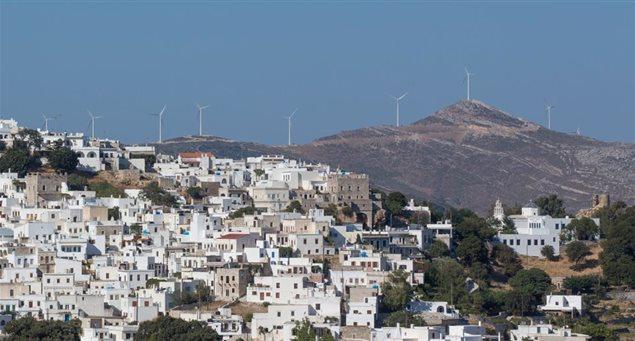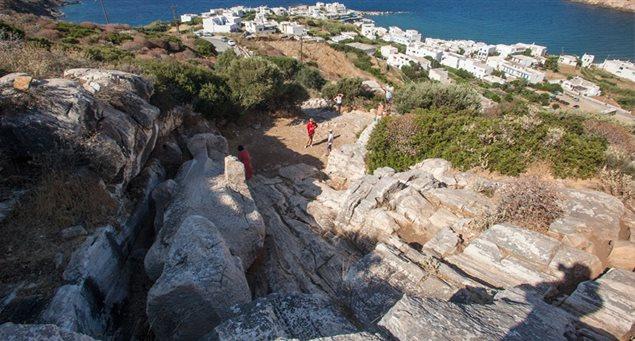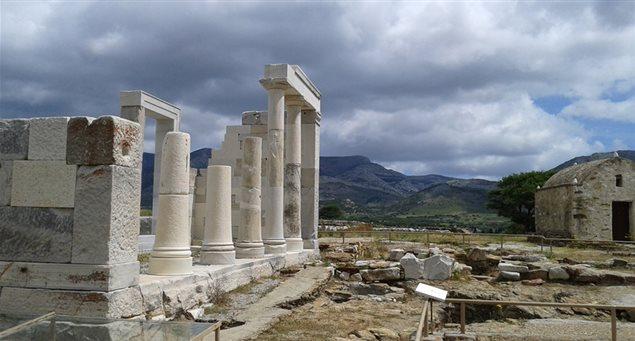
Besides the prominent ancient Greek gods, the mythology of Naxos also involves a number of lesser deities.
Ares, for instance, the god of war, was likely worshipped on Mt. Fanari, situated between the village of Apiranthos and the Tragea valley.
Naxiot historiographer Iakovos Grimaldi mentions that an inscription reading “ΤΕΜΕΝΙΣΜΑ ΑΡΕΟΣ” (“Ares’ place of worship”) was found among the ruins of the Church of Agios Georgios -which suggests the existence of a temple in honor of the specific god.
Tradition has it that when Ares killed Adonis –Aphrodite’s beloved one- the giant Aloades brothers, Otus and Ephialtes, twin sons of Poseidon, confined him in a big earthen pot for 13 months for punishment.
After his release, he sought refuge on Naxos and hid in a place where “the stone devours iron” –considered to be the Bitsa summit on Mt. Fanari.
According to the myth, the Aloades brothers possessed supernatural strength, which grew dangerously with age.
They threatened to dethrone Zeus from Mt. Olympus. In order to deal with the threat the Father of the Gods sent them to Naxos to find their mother who had been abducted by the Naxiots.
Whilst out in the wild looking for their mother, Artemis the goddess of hunting, devised a trick whereby they killed each other.
The Naxiots buried them and worshipped them like heroes. The quarry workers in the Flerio area of Melanes designated them as their protectors due to their supernatural strength, hoping this would help them in their hazardous and hard job. This is suggested by an inscription found in the area which refers to a place of worship for Otus and Ephialtes.
Sanctuaries found in caves and mountain summits also indicate the worshiping of other deities, as for instance of the Nymphs in the Eggares area –according to an inscription in the cave church of Gennisi (Nativity), at the foot of Mt. Kalo.
Similar signs of predating ancient worship have been found at the churches of Panagia Kaloritsa in theDamarionas area, and in Nyfiotissa, a small cave chapel at Amelathi position, Tsikalario. An identical sanctuary has been found in Panagia Spiliotissa church, at Argia.
Hephaestus, the god of fire and metalworking, was said to have learned his trade on Naxos and then went to Lemnos.
And last, the prevalent view has it that Naxos was named after the king of Karia, a dominion in Asia Minor whose inhabitants, the Kares, also colonized the island.
In Greek mythology, however, Naxos was the son of Apollo and Akale, daughter of King Minos of Crete –which indicates the connection of the island with the Minoan Civilization.
The first name of the island was Stroggyli (“round”), followed by Dia and then Naxos.




